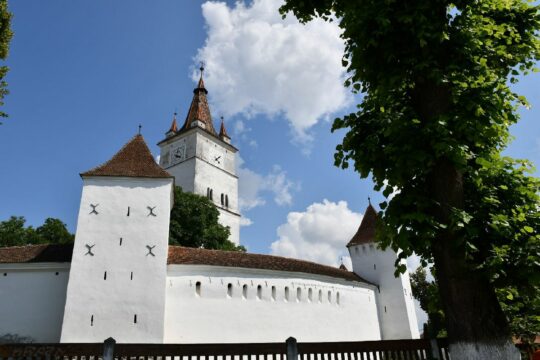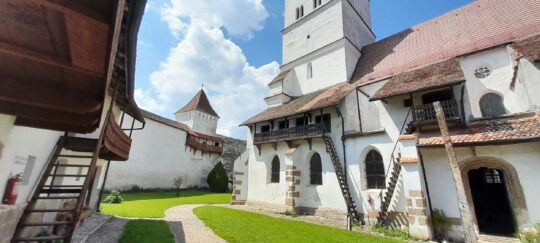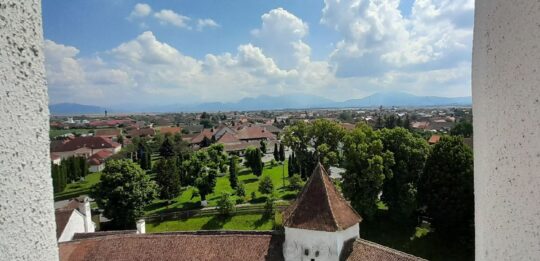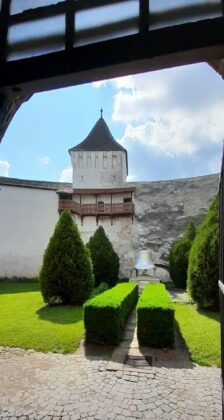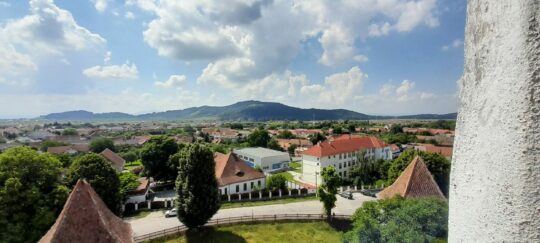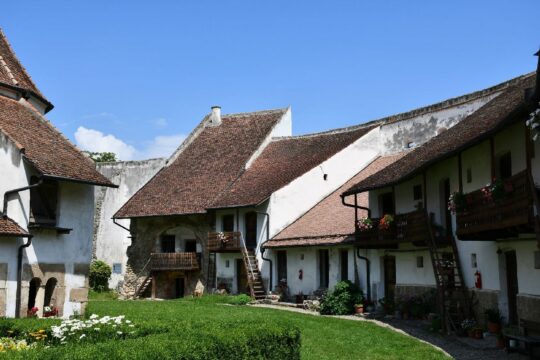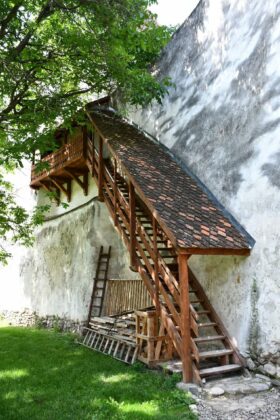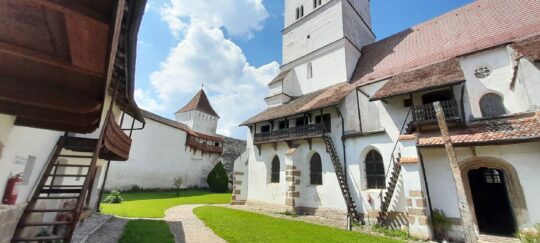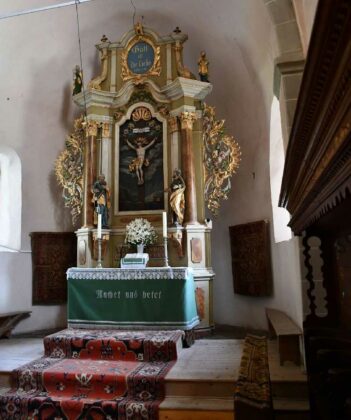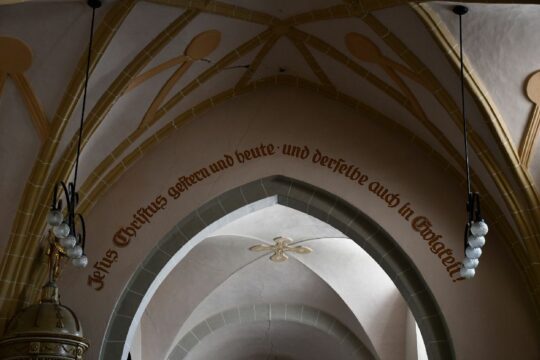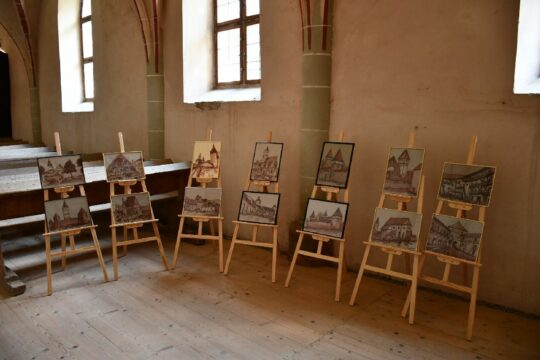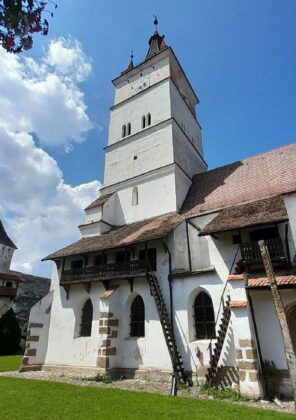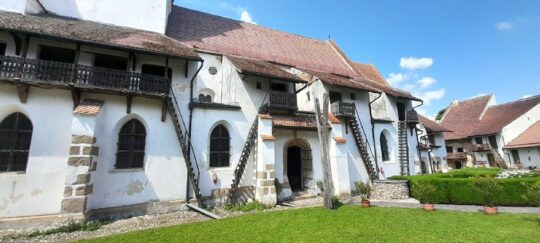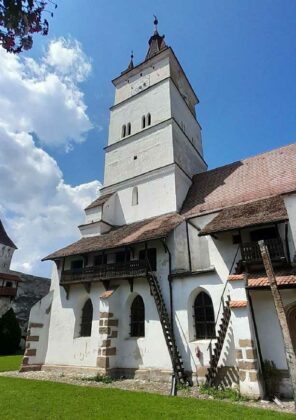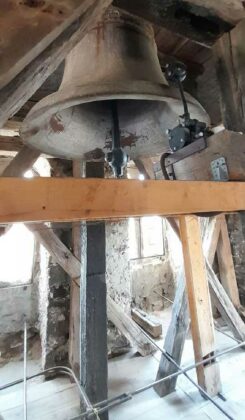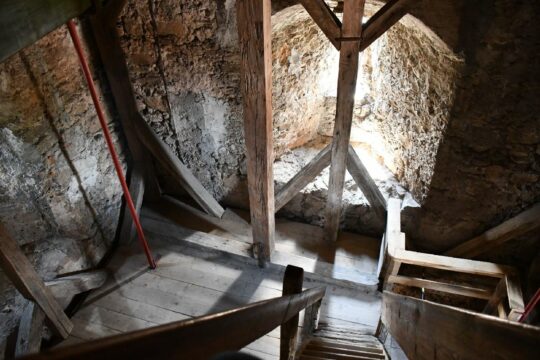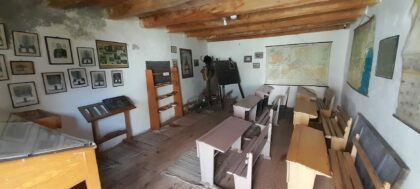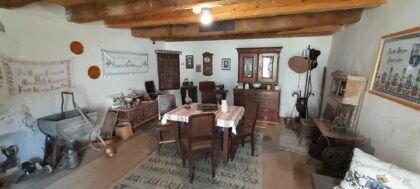
Surroundings | Around Brasov
Citadel | Harman Church Castle
Short description: It has a history of more than 800 years and is one of the best preserved churches in the Barsa Country, first attested in 1240. The construction consists of the church-city and the fortification, two important elements.
It is said that although it was attacked many times and besieged it was never conquered.
The history of the fortress is linked to the presence of the Teutonic Knights in the Bârsa Country at Feldioara, Prejmer, Râșnov or Sânpetru, in 1240 when King Bela IV of Hungary offered the monks’ settlement to the Cistercian order.
Fortified Evangelical Church in Harman Fortress
The church-fortress was originally conceived as a basilica building with 3 naves but was converted to Gothic style in the 15th century. Here are 7 defensive towers and one with a belfry and on the roof were placed four corner turrets indicating the facet of the locality had the right to give and execute the capital sentence.
The interior of the church is quite heteroclite, so that in addition to Cistercian elements (the windows with four openwork lobes above the arched windows) a number of elements from various other periods are preserved. The central nave, originally covered with a ceiling, was vaulted in 1595 after a fire that devastated both the commune and the fortress. The collaterals were originally cross vaulted, and the semicircular triumphal arch was transformed into a pointed arch with the vaulting of the nave. The east colonnade has a beautiful late Gothic-style trilobate arched doorway. The chancel retains its original cross vault and the apse a semi-circular apse.
The church was endowed with a 19-register Baroque organ in the 18th century (by Karl Einschenk and Josef Nagy), when the altar was built (Franz Eberhard), but it still preserves traces of the Romanian basilica in the semicircular apse and in the original windows with traces of mural paintings. The interior of the church is decorated with oriental carpets and the pews with floral motifs. The pulpit is set directly into the wall, without access via an external staircase, but through the sacristy. In the fortified church, services are still held every week, so the pews lined up like school benches await their worshippers.
Originally, the choir was flanked by two Cistercian chapels for monks to pray in, but in the 15th century the north chapel was converted into a sacristy. This is vaulted in the nave with terracotta penetrations and ribs. The vaulting rises from the corbels in the shape of the heads of men with moustaches and women with their mouths ajar. Visible today only in fragments, on the longitudinal walls of the nave, but also on the east wall, the fresco covered the entire church up to just below the ceiling.
The main portal is on the west façade and is in late Gothic style.
In its lunette is painted on a cobalt-blue background a symbol of sacrifice, the pelican feeding its young with its own flesh. On either side of the portal, two sacnasiu-shaped turrets stand out, both inside and out, housing the spiral staircase leading to the tribunes. In the 15th century the community attempted to convert the basilica into a Gothic style, but the work did not continue beyond the addition of the bell tower, which at 32 metres was the tallest in Țara Bârsei.
Outside – fortification
The fortification surrounding the church consists of a triple cordon of concentric curtain walls and was built in the 15th century. The 4.5 metre outer wall was used to defend the base of the enclosure and also set the boundary of the water moat surrounding the fortress. The inner wall is covered by a road on which the foreigners of that time kept watch against the enemy. It was 12 metres high.
Part of the church’s history was lost during the First World War when, because of the need for metal to produce armamaent, the bells were melted down. In 1923 and 1925 they were replaced. The only untouched bell was the one in the gate tower.
Harman Museum and the Old School
On the inner side of the fortress defensive wall, sheds and dwellings were built and in some small rooms exhibitions with old and traditional objects were set up, including a classroom. In the past these small rooms were used as a place of refuge for the locals in case the village was attacked.
West Tower / East Tower
The West Tower dates back to the 14th century and is the tallest building in the Barsa Country with a height of 56 meters. At the top of the tower is a clock dating from the 16th century.
In the east tower is a chapel with frescoes depicting scenes from the life of the Virgin Mary, the Crucifixion of Jesus and the Last Judgement.

